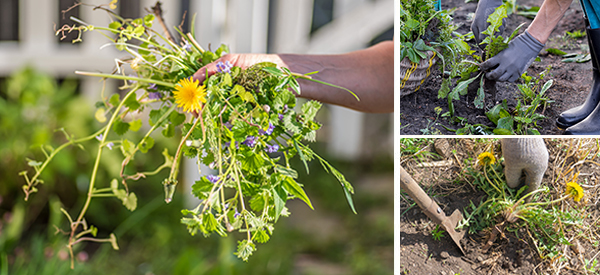
People Weed Out These Plants, But Here’s What You Should Do Instead
No one likes weeding. There are so many other jobs in the garden that motivate me, but when it comes to keeping on top of my weeds, I suddenly can’t find the time.
So why not “value-add” to the onerous task by putting some of those weeds to good use? Composting is the obvious one, but you can always combine weeding with foraging since many of the weeds we pull out are edible. There’s also the option to create either a salve or infused oil to benefit from the medicinal properties of the weeds found around us.
Below is a short list of some internationally common weeds that can be put to good use in the kitchen or medicinal cabinet.
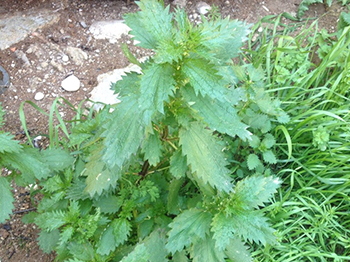
Stinging nettle
Stinging nettle (Urtica dioica) is usually weeded out due to its hollow, stinging hairs, but the leaves and stems can be made into a nutritious tea (brew for 5 minutes then strain) or blanched and eaten like spinach to treat a wide range of conditions, for example, hypertension and rheumatoid arthritis.
Just remember to harvest fresh new growth in spring before seeds are produced in summer when the leaves become inedible.
Mallow
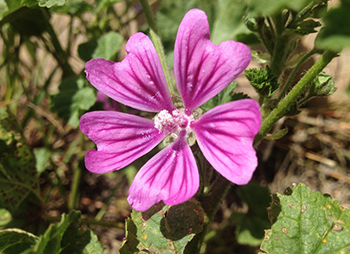 Mallow (Malva spp.) has mucilage and polysaccharides and the whole plant can be used to soothe irritated mucus membranes like a sore throat or chest congestion.
Mallow (Malva spp.) has mucilage and polysaccharides and the whole plant can be used to soothe irritated mucus membranes like a sore throat or chest congestion.
It’s a strong anti-oxidant and is effective against certain microbes and inflammation.
Brew a small handful of fresh or dried roots, leaves, and/or flowers in hot water for 5 minutes. Alternatively, add the leaves and flowers to a smoothie.
Dandelion
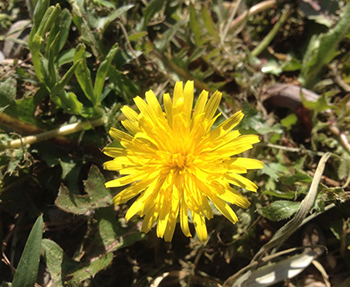 Dandelion (Taraxacum spp.) is entirely edible; from root to seeds.
Dandelion (Taraxacum spp.) is entirely edible; from root to seeds.
Leaves are best blanched before eating to remove some of the bitterness due to the small amounts of white latex in them.
Brewing a tea from the leaves and flowers or grinding the roots with warm water makes a caffeine-free alternative to coffee which can produce anti-diabetic and anti-tumor effects.
When extracted in at least 40% alcohol for 1 – 2 weeks, the fresh or dried leaves and flowers make a strong anti-inflammatory tincture for treating heart disease. When the dried leaves and flowers are infused in warm oil for 2 – 3 hours, the oil can treat liver conditions.
Catsear
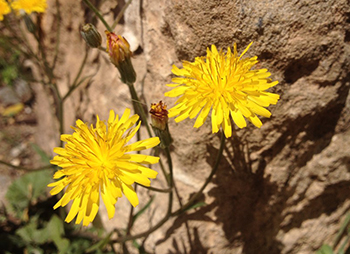 Catsear or False Dandelion (Hypochaeris spp.) is entirely edible, although not as bitter as dandelion so it can be eaten raw.
Catsear or False Dandelion (Hypochaeris spp.) is entirely edible, although not as bitter as dandelion so it can be eaten raw.
It is high in sesquiterpene lactones which have an enormous range of proven medicinal benefits and are best extracted via oil.
Chop up and dry the entire plant then infuse it in oil for 2 weeks. Strain and ingest a teaspoon of the oil.
It is NOT recommended to use it topically due to potential skin sensitivities.
Dock Weed
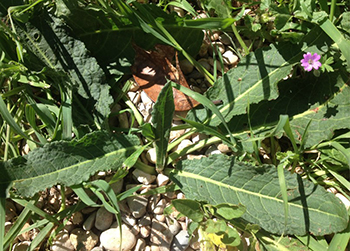 Dock weed (Rumex spp.) leaves and roots are high in antioxidants and phenolic compounds, such as anthraquinones and flavonoids, which have numerous health benefits and are best extracted into an alcoholic tincture.
Dock weed (Rumex spp.) leaves and roots are high in antioxidants and phenolic compounds, such as anthraquinones and flavonoids, which have numerous health benefits and are best extracted into an alcoholic tincture.
Infuse fresh roots and leaves in 40% alcohol for 2 weeks then strain and take half a teaspoon of the liquid tincture every day. You can also eat fresh, new dock weed leaves in small quantities raw, otherwise, boil them to remove some of the oxalic acids.
Goosefoot
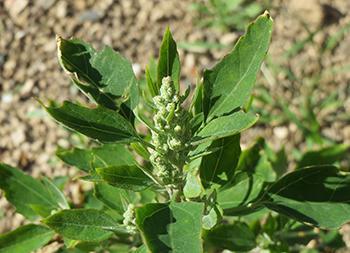 Goosefoot (Chenopodiastrum spp.) seeds, leaves, and stems are all edible and nutritious.
Goosefoot (Chenopodiastrum spp.) seeds, leaves, and stems are all edible and nutritious.
High in both glycoside and aglycone coumarins such as scopoletin, it is used as a treatment for diabetes and depression in the form of both a simple tea brewed for 5 – 10 minutes as well as an alcohol tincture like dock weed above.
Dovefoot
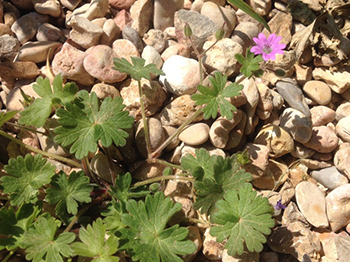 Dovefoot geranium (Geranium molle) flowers are edible and half a handful of fresh leaves and flowers can be brewed into a tea to reduce fever and treat diarrhea.
Dovefoot geranium (Geranium molle) flowers are edible and half a handful of fresh leaves and flowers can be brewed into a tea to reduce fever and treat diarrhea.
Alcoholic tinctures may have anti-cancer, anti-hyperglycemic, and anti-inflammatory properties.
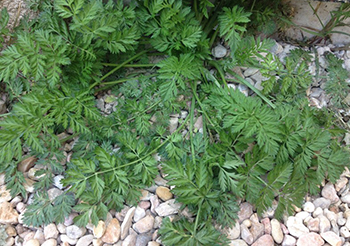
Tinctures will take 1 week to extract in alcohol (use a higher % alcohol for fresh flowers and leaves and a lower % alcohol for dried).
Hedge Parsley
Hedge parsley (Torilis spp.) contains anti-inflammatory, anti-bacterial, and anti-cancer compounds which are best extracted in an alcoholic tincture like Dovefoot geranium.
You can also eat it like common parsley.
Plantain
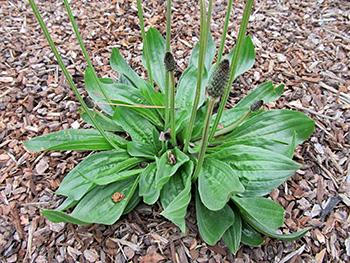 Plantago (Plantain spp.) is from the family that is very high in verbascoside which is a strong anti-microbial and anti-inflammatory, as well as chlorogenic acid which can help to reduce blood pressure. Both compounds are soluble in hot water, so it’s easy to brew half a handful of leaves and flowers for 5 minutes into a simple tea. It is also a proven wound healer, so can be infused in oil to make a salve.
Plantago (Plantain spp.) is from the family that is very high in verbascoside which is a strong anti-microbial and anti-inflammatory, as well as chlorogenic acid which can help to reduce blood pressure. Both compounds are soluble in hot water, so it’s easy to brew half a handful of leaves and flowers for 5 minutes into a simple tea. It is also a proven wound healer, so can be infused in oil to make a salve.
Clover
Clover (Trifolium spp.), even the common one found in your lawn, is edible and full of antioxidants, saponins, isoflavones, phenolic acids, and flavones which are best extracted via an alcoholic tincture or fermented with raw sugar.
Fermentation will increase the bioavailability of the isoflavones for improving bone mass and strength, especially in red clover.
Broom
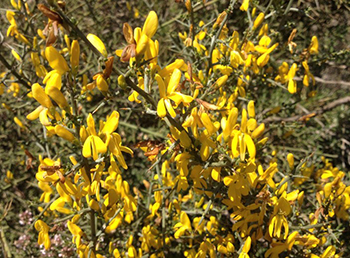
Broom (Genista spp) is often a declared weed outside of its home range due to the abundance of seeds it produces and toxicity to livestock.
The flowers make a yellow dye and the plant contains anti-inflammatories and phytoestrogens such as genistein aglycone and daidzein which are great for healthy skin.
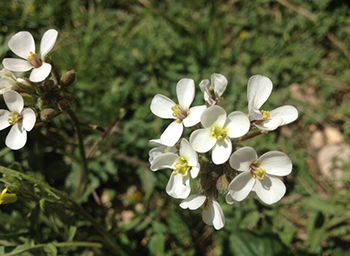
These compounds are soluble in oil but the toxic alkaloids found in broom are less so, which means it is only safe to use a broom when turned into a salve by infusing it in warm oil for 2 hours and combining the oil with beeswax.
Wild Radish
Wild radish (Raphanus raphanistrum) is a common weed in crops and gardens but the entire plant is edible; both raw and cooked.
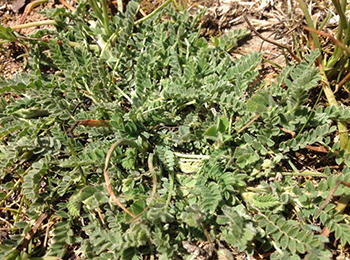
It is also high in sterols which can treat high cholesterol.
Milk Vetch
Milk Vetch (Astragalus membranaceus.) roots are high in polysaccharides, flavonoids, and saponins; all of which have various health benefits, especially for the immune system and gut flora. The bioavailability of the polysaccharides can be significantly increased by using a lactic acid fermentation process.
This involves massaging 1 tablespoon of salt into 1 pound of freshly grated/chopped roots and sealing it in a jar for 1 – 2 weeks at room temperature. Other Astragalus species are toxic to livestock and potentially harmful to humans in higher doses.
In conclusion, instead of composting your weeds, take a closer look at how you can actually utilize them in your diet, garden, or medical cabinet first; you might be surprised to discover some pretty handy uses from some of those weeds in your garden.
75+ Spring DIY Projects: No. 5 Will Take You by Surprise! (Video)
Edibility Test: Find Out Which Backyard Weeds are Edible


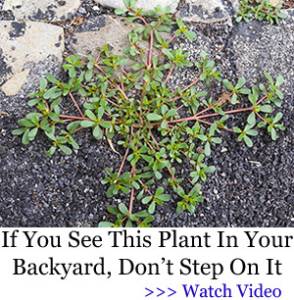
Absolutely love all the information I’ve gleaned from your site. Thank you
Hi Lesa,
Thank you so much for your kind words. We are delighted to hear that you like our articles.
Many blessings and good health!
Love the information! It would be nice if we could click on the images to see them in a larger format for identification purposes.
I recommend an app for your smart phone called “Pl@ntNet”. Just upload a photo of the plant and it will give you some suggestions and more photos from other users. It’s really handy.
I love and cherish all of the information shared here.
Hi Willie,
Thank you for taking the time to send us your feedback.
We really appreciate it and we are happy to hear that you love our articles.
Many blessings and good health!
Thank you very helpful hope this carries on and helps many many more n good health
thankyou for the daily knowledge that I gain from your emails, your information is simple and easy to digest, it has become my daily wisdom ritual…
Hi Kelly,
Thank you so much for your kind words. We are delighted to hear that you enjoy reading our emails.
Many blessings and good health!
My great-grandmother harvest these plants when I was small. I am learning so much from you. Thank you.
DARLENE I love the information and I am delighted to cherished all shared knowledge Thank you so much